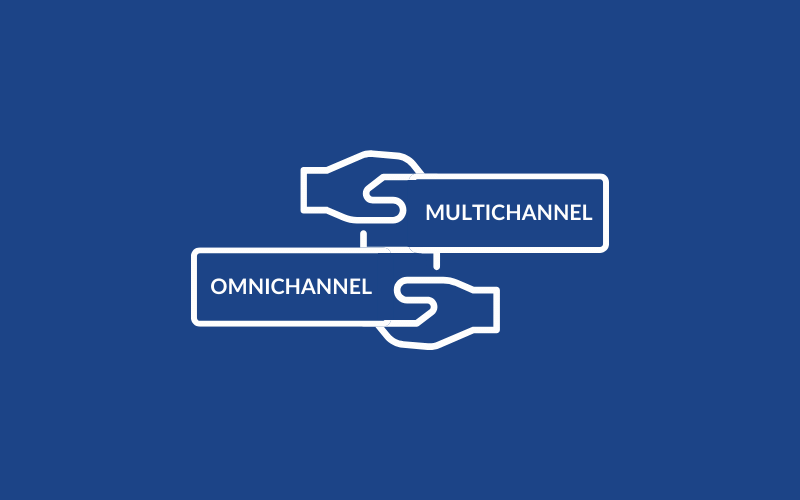Introduction
In today’s rapidly evolving business landscape, retailers face the challenge of reaching and engaging customers through various channels. Multichannel and omnichannel retail strategies have emerged as two popular approaches to tackle this challenge. In this comprehensive guide, we will delve into the differences between multichannel and omnichannel retail, their advantages and disadvantages, and provide valuable insights to help you choose the right strategy for your business.
Understanding Multichannel Retail
Multichannel retail is a distribution strategy where businesses offer products or services through multiple channels, such as physical stores, websites, mobile apps, social media platforms, and more. Each channel operates independently, providing customers with various touchpoints to make purchases.
The Benefits of Multichannel Retail
Multichannel retailing offers several benefits for businesses seeking to expand their reach and customer base:
- Enhanced Reach: By leveraging multiple channels, businesses can tap into a broader audience and engage customers across different platforms. This broader reach increases brand visibility and the potential for sales.
- Convenience for Customers: Customers appreciate the flexibility of being able to browse and shop through their preferred channel. Whether it’s online, in-store, or via mobile devices, multichannel retail accommodates diverse customer preferences, leading to improved customer satisfaction.
- Improved Sales Opportunities: With multiple channels available, businesses can create additional sales opportunities by leveraging the strengths of each channel. For example, showcasing products in-store while offering online exclusives can drive both online and offline sales.
The Challenges of Multichannel Retail
While multichannel retail presents numerous advantages, it also comes with its own set of challenges:
- Channel Consistency: Maintaining a consistent brand experience across various channels can be challenging. Ensuring that the messaging, pricing, and promotions align seamlessly requires careful coordination and integration.
- Inventory Management: Managing inventory across multiple channels can be complex. Real-time synchronization of stock levels is crucial to prevent overselling or stockouts, ensuring a smooth shopping experience for customers.
- Operational Complexity: Operating multiple channels necessitates additional resources and systems to manage each channel effectively. Businesses must invest in infrastructure, technology, and training to support their multichannel operations.
Exploring Omnichannel Retail
Omnichannel retail takes the concept of multichannel retailing a step further by providing a seamless and integrated customer experience across all channels. In an omnichannel strategy, all channels work together as a cohesive unit, ensuring a consistent brand experience throughout the customer journey.
The Benefits of Omnichannel Retail
Omnichannel retailing offers a range of benefits that can revolutionize the way businesses interact with customers:
- Consistent Customer Experience: By delivering a unified brand experience across channels, businesses can enhance customer loyalty and trust. Customers can seamlessly transition between channels without encountering inconsistencies, fostering a stronger connection with the brand.
- Personalization and Customization: Omnichannel strategies allow businesses to gather data and insights across various touchpoints. This data can then be leveraged to personalize marketing efforts, recommend tailored products, and offer customized promotions, ultimately enhancing customer satisfaction.
- Efficient Inventory Management: With an omnichannel approach, businesses gain better visibility into inventory levels across all channels. This visibility enables optimized stock allocation, reducing the likelihood of stockouts or excess inventory.
The Challenges of Omnichannel Retail
While the benefits of omnichannel retail are compelling, implementing an effective omnichannel strategy can be challenging due to the following factors:
- Technological Integration: Creating a seamless experience across channels requires robust technology infrastructure and integration capabilities. Businesses need to invest in systems that enable data synchronization, centralized inventory management, and customer relationship management.
- Organizational Alignment: An effective omnichannel strategy requires collaboration and alignment across departments within an organization. Breaking down silos and fostering cross-functional teamwork is crucial for success.
- Data Security and Privacy: Collecting and utilizing customer data for personalization purposes must be done in compliance with data protection regulations. Businesses must prioritize data security and privacy to maintain customer trust.
Making the Right Choice: Multichannel vs Omnichannel?
Choosing between a multichannel or omnichannel retail strategy depends on various factors, including the nature of your business, target audience, resources, and goals. Here are some considerations to guide your decision-making process:
- Business Size and Complexity: Multichannel retailing may be a suitable choice for smaller businesses or those just starting their journey into online sales. Omnichannel retailing, on the other hand, requires more resources and technological capabilities, making it a better fit for larger enterprises.
- Customer Preferences and Demographics: Analyze your target audience’s preferences and behaviors to determine which channels they frequent the most. Understanding where your customers spend their time and how they prefer to shop can influence your retail strategy.
- Resource Allocation: Consider the resources available to your business, both in terms of budget and expertise. Implementing an omnichannel strategy requires investments in technology, training, and ongoing maintenance. Ensure you have the necessary resources to support your chosen approach.
- Competitive Landscape: Research and analyze how your competitors are approaching their retail strategies. Identifying gaps and opportunities in the market can help you make informed decisions about whether to adopt a multichannel or omnichannel approach.
Conclusion
In conclusion, both multichannel and omnichannel retail strategies offer unique advantages and challenges. Multichannel retailing provides flexibility and broad customer reach, while omnichannel retailing focuses on delivering a seamless and personalized customer experience. By carefully considering your business needs, customer preferences, and available resources, you can make an informed decision on which strategy to adopt. Remember, the retail landscape is ever-evolving, so regularly reassessing your approach and adapting to changing customer expectations is vital for long-term success.
By understanding the differences and nuances between multichannel and omnichannel retail, you can make informed decisions that align with your business goals and drive success in the ever-competitive retail industry. Remember, customer expectations and preferences continue to evolve, so continually assessing and refining your retail strategy is essential for staying ahead in the market.


